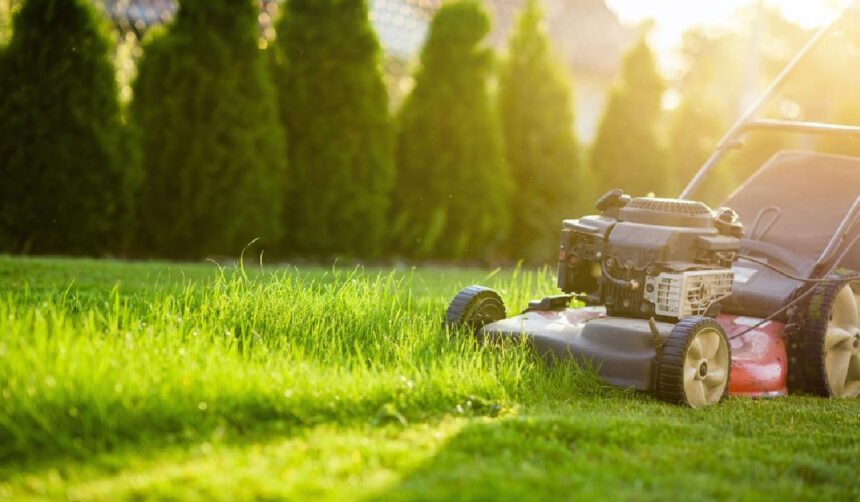Maintaining a healthy, vibrant lawn is both a science and an art. For many, a well-kept lawn represents pride in homeownership, an aesthetic statement, and even a small personal sanctuary. Yet, achieving that lush green perfection requires more than just routine mowing. It involves understanding your soil, selecting the right grass, timely fertilization, and a proactive approach to weed and pest control. In this comprehensive guide, we’ll explore everything you need to know to take your lawn from average to exceptional.
The Foundation: Understanding Soil and Grass Types
Before laying down grass or applying any treatments, the foundation of any great lawn begins beneath the surface — with the soil.
Soil Testing and Preparation
Healthy grass needs nutrient-rich, well-drained soil to thrive. Testing your soil’s pH level and nutrient profile can give you vital insights into what amendments it needs. A neutral pH between 6.0 and 7.0 is ideal for most turfgrass species.
To prepare the soil:
- Remove rocks and debris.
- Loosen compacted soil using a tiller or aerator.
- Add organic matter or compost to enrich poor soil.
- Apply lime or sulfur if pH adjustments are necessary.
Choosing the Right Grass
Different grass species thrive under different conditions. Climate, sun exposure, and intended use all influence which variety is best.
Cool-season grasses such as Kentucky bluegrass, fescue, and ryegrass thrive in cooler climates and maintain color in spring and fall.
Warm-season grasses like Bermuda, zoysia, and St. Augustine excel in hotter climates and grow most actively in summer.
Mixing grass types can sometimes produce a more resilient and attractive lawn that responds better to environmental stress.
Watering Wisely: The Lifeblood of Lawn Health
Watering might seem simple, but poor watering practices are among the most common reasons for lawn decline.
Deep and Infrequent Watering
Rather than daily shallow watering, lawns benefit from less frequent, deep watering sessions. This encourages grass roots to grow deeper, making them more drought-resistant.
- Frequency: 2–3 times a week (depending on rainfall and temperature)
- Timing: Early morning is ideal to minimize evaporation and reduce the risk of disease.
- Amount: About 1 to 1.5 inches per week, including rainfall.
Overwatering can lead to fungal diseases and poor root development, while underwatering causes stress and browning.
Mowing Techniques That Make a Difference
Mowing is more than just cutting grass — it’s a critical part of turf health and appearance.
Best Practices for Mowing
- Keep blades sharp: Dull blades tear rather than cut, causing stress.
- Follow the one-third rule: Never cut more than one-third of the grass blade at a time.
- Adjust mowing height: Different grass types have ideal cutting heights. Cutting too low weakens the grass and encourages weed growth.
- Change mowing patterns: Avoid mowing in the same direction each time to prevent compaction and ruts.
Grass clippings can be left on the lawn as they decompose quickly and return valuable nutrients to the soil — a process known as grasscycling.
Fertilization: Feeding for Growth
Fertilizers provide essential nutrients like nitrogen (N), phosphorus (P), and potassium (K) that grass needs for healthy growth.
Types of Fertilizers
- Synthetic fertilizers: Provide immediate nutrient availability but can cause runoff if over-applied.
- Organic fertilizers: Release nutrients slowly and improve soil structure over time.
Fertilizing schedules depend on your grass type:
- Cool-season grasses: Fertilize in early spring and fall.
- Warm-season grasses: Fertilize in late spring through summer.
Always read the label and follow application instructions carefully to avoid burning your lawn or harming the environment.
Weed Management: Staying Ahead of Invasive Growth
Weeds are more than an eyesore — they compete with grass for water, nutrients, and sunlight.
Preventative Strategies
- Maintain thick turf: A dense lawn naturally crowds out weeds.
- Use pre-emergent herbicides: These stop weed seeds from germinating and are especially effective against crabgrass and dandelions.
Spot Treatment
For existing weeds:
- Pull manually when possible.
- Use post-emergent herbicides for targeted control. Selective herbicides attack only broadleaf weeds, preserving your grass.
Combining mechanical, chemical, and cultural methods offers the most sustainable and effective weed control program.
Aeration and Dethatching: Breathing Life into Your Lawn
Over time, lawns can become compacted, limiting the flow of air, water, and nutrients to roots. Thatch — a layer of dead grass and roots — can also accumulate and suffocate your lawn.
Core Aeration
This process removes small plugs of soil to relieve compaction and enhance root growth. It is typically done in early spring or fall for cool-season grasses and in late spring for warm-season varieties.
Dethatching
If thatch exceeds half an inch, it should be removed. This can be done manually with a dethatching rake or using a power dethatcher.
These techniques, when done annually or as needed, can dramatically improve lawn health and resilience.
Pest and Disease Control
Insects and fungi can quickly undo months of hard work if left unchecked.
Common Lawn Pests
- Grubs: Feed on roots and cause grass to wilt and die in patches.
- Chinch bugs and armyworms: Damage grass blades, leading to browning and thinning.
Diseases
Fungal infections like brown patch, dollar spot, and rust are common under moist, humid conditions. These issues often arise from poor watering practices, over-fertilization, or improper mowing.
Integrated Pest Management (IPM)
IPM strategies focus on monitoring, prevention, and targeted treatment. By identifying issues early and using appropriate control measures, you can manage pests and diseases while minimizing chemical use.
Seasonal Lawn Care Tips
Each season demands a unique approach to lawn care to keep grass healthy and attractive year-round.
Spring
- Aerate if needed
- Apply pre-emergent weed control
- Begin fertilizing based on soil test
- Start mowing when grass begins to grow
Summer
- Monitor watering carefully
- Mow regularly without scalping
- Watch for signs of pests and stress
- Avoid fertilizing during extreme heat
Fall
- Fertilize cool-season grasses
- Overseed thin areas
- Remove fallen leaves regularly
- Apply weed control as necessary
Winter
- Limit foot traffic on dormant grass
- Keep lawn free of debris
- Plan for spring tasks and equipment maintenance
Incorporating Lawn Care into Your Routine
Effective lawn care doesn’t have to be overwhelming. By creating a seasonal checklist and staying consistent with routine maintenance, you can keep your lawn healthy with less effort and expense in the long run.
Even small actions — like adjusting your mower height or watering at the right time — can make a big difference. And when problems do arise, addressing them promptly is key to preventing long-term damage.
If you’re pressed for time or unsure about certain tasks, hiring professional lawn care services can ensure your yard stays in top condition. Experts bring specialized equipment and knowledge to handle complex issues that homeowners may not feel confident tackling alone.
The Aesthetic and Personal Value of a Great Lawn
A beautiful lawn doesn’t just improve curb appeal — it enhances your lifestyle. It provides a space for children and pets to play, for relaxation in the sun, and for gathering with friends and family. It’s an extension of your living space, and with proper lawn care, it can become one of the most valuable and enjoyable areas of your home.
Conclusion
The path to a perfect lawn requires patience, commitment, and knowledge. By focusing on proper mowing, watering, fertilization, and proactive management of weeds, pests, and soil health, anyone can cultivate a thriving green space. Whether you’re handling it all yourself or working with a professional team, consistent lawn care practices lead to beautiful, long-lasting results.
For More Information, Visit Dotmagazine









